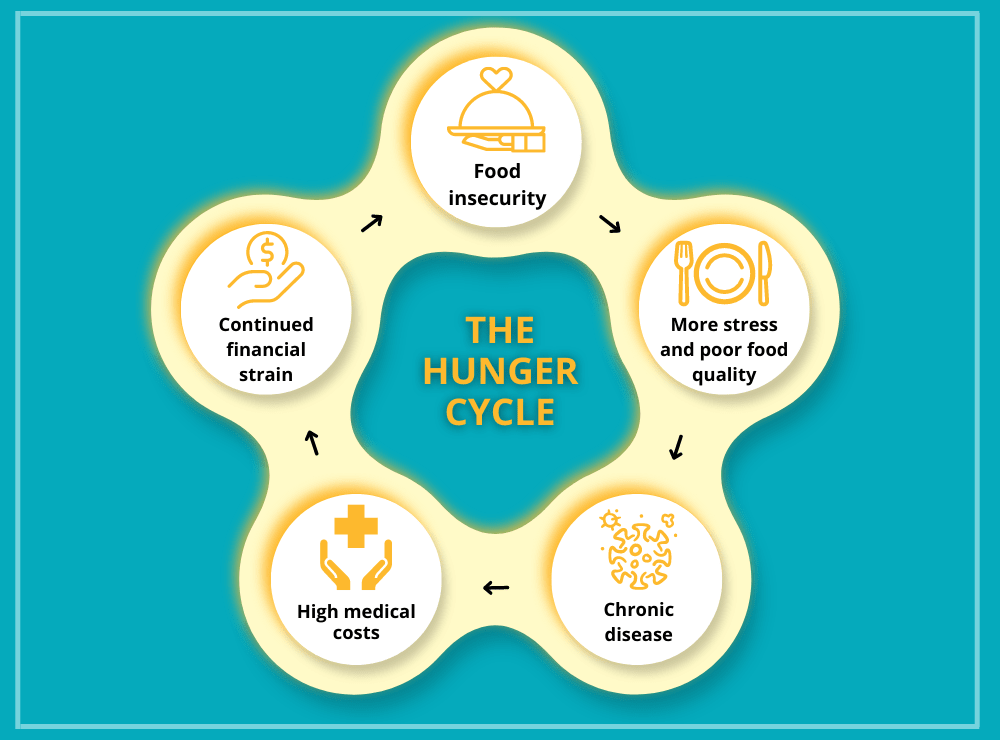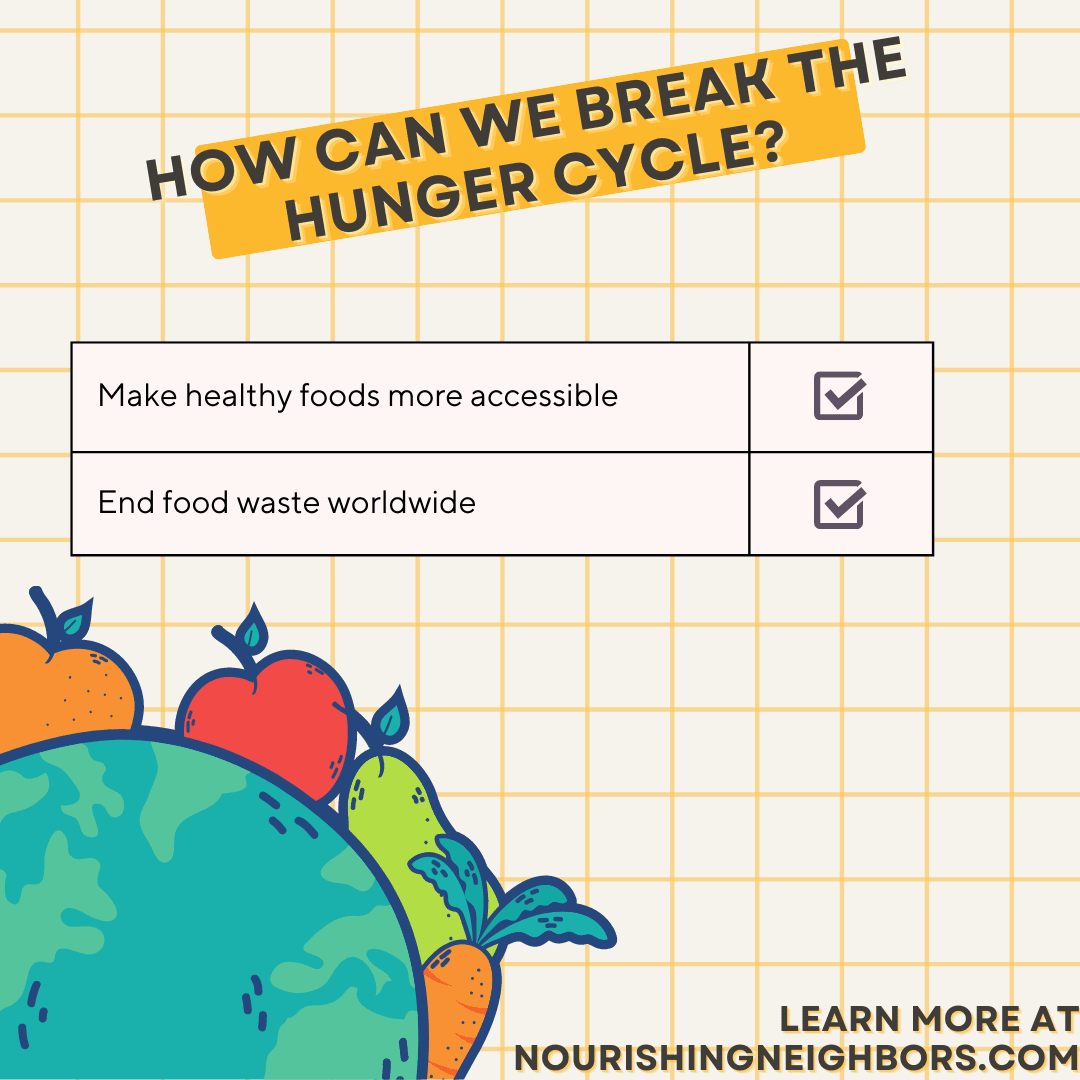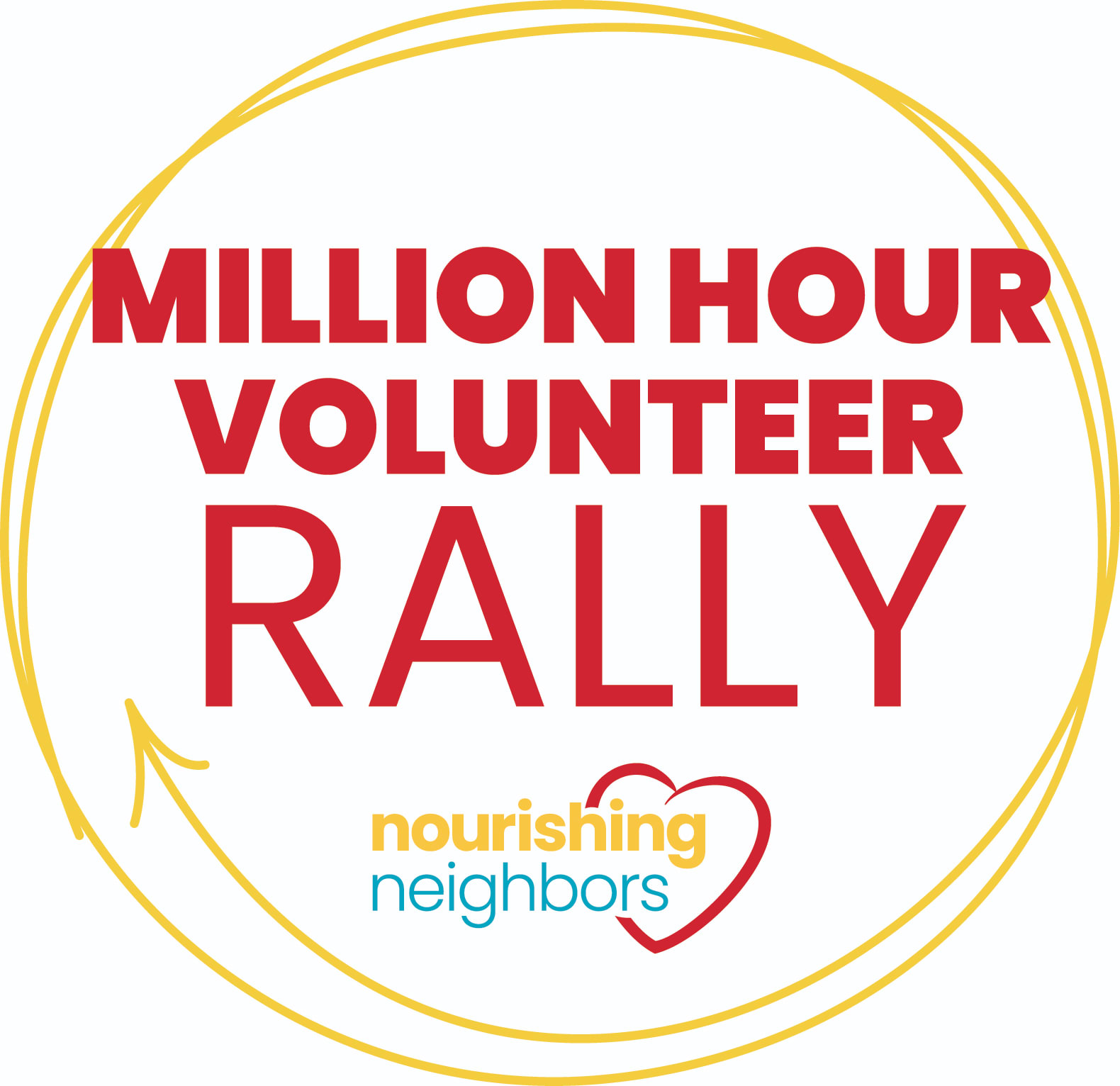
The Hunger Cycle Explained
How could you help someone escape the hunger cycle?
Food insecurity and improper nutrition can trap families in a cycle of poverty and hunger. 40% of Americans are one paycheck away from being caught in the cycle, and many struggle for years to escape it. By breaking down the Hunger Cycle, we hope to explore ways of also breaking free from it.
What is the hunger cycle?
A lack of healthy food and proper nutrition can trap households in a cycle that depletes their physical and financial resources.

- When an individual or family becomes food insecure, many times their only option is to buy cheaper foods with low nutritional value. These alternatives are frequently high in fat, salt, sugar, and calories, which have a correlation with chronic diseases and mental distress.
- Concurrently, chronic hunger and malnutrition can negatively impact job and education performance, making it even more difficult to escape poverty. Financial strain adds another layer of stress.
- This diet - and its associated stressors - can lead to costly health conditions, which adds an additional expense to the household.
- This causes even more financial struggles and forces the household to feel heavier food insecurity.
What causes food insecurity, and how to break the hunger cycle?
- One important way to break the cycle: making healthy foods more accessible. Many low-income households are in need of nutrient-rich foods, such as fresh fruits and vegetables, whole grains, low-fat dairy, and lean proteins, all of which are becoming more inaccessible each year.
- Another factor affecting food insecurity is deep-rooted systems of inequity. Hunger is frequently a symptom of poverty, which people of color experience more often than their white counterparts. To fight hunger, we must fight the core cause of it--inequality.
- Extreme food waste is another contributor to the hunger cycle and the depths of food insecurity. In America, 108 billion pounds of safe food go to waste every year. It’s time for a more sustainable, efficient food system. One solution: community fridges, which you can learn more about here.

Did you know about the realities of the hunger cycle in America?
Want to help make food more accessible to those in need? Donate to Nourishing Neighbors today.
MOST POPULAR
-
 Albertsons Companies and Albertsons Companies Foundation Kick Off 2025 Million Hour Volunteer RallyAlbertsons Companies, in partnership with the Albertsons Companies Foundation, is excited to kick off our 2025 Million Hour read more... Local Stories of Impact
Albertsons Companies and Albertsons Companies Foundation Kick Off 2025 Million Hour Volunteer RallyAlbertsons Companies, in partnership with the Albertsons Companies Foundation, is excited to kick off our 2025 Million Hour read more... Local Stories of Impact -
 Nourishing Neighbors Innovation Incubation Fund RFPRequest for Proposals 2025 Innovation Spark Incubation Fund RFP Background Nourishing Neighbors , a program of Albertsons read more... Resources
Nourishing Neighbors Innovation Incubation Fund RFPRequest for Proposals 2025 Innovation Spark Incubation Fund RFP Background Nourishing Neighbors , a program of Albertsons read more... Resources -
 Albertsons® Companies Announces New Goal to Enable 1.5 Billion Meals Across Local Communities and pledges $10 million annually to help end the cycle of hunger by 2030BOISE, Idaho — March 10, 2025 — Albertsons® Companies, Inc. (NYSE: ACI) (“Albertsons”) and The Albertsons® Companies Foundation read more... Local Stories of Impact
Albertsons® Companies Announces New Goal to Enable 1.5 Billion Meals Across Local Communities and pledges $10 million annually to help end the cycle of hunger by 2030BOISE, Idaho — March 10, 2025 — Albertsons® Companies, Inc. (NYSE: ACI) (“Albertsons”) and The Albertsons® Companies Foundation read more... Local Stories of Impact -
 Join Us in the Fight to End Hunger- ForeverAt Nourishing Neighbors, we have been on a mission to tackle hunger in the U.S. since 2014. Our holistic approach- Today, read more... Local Stories of Impact
Join Us in the Fight to End Hunger- ForeverAt Nourishing Neighbors, we have been on a mission to tackle hunger in the U.S. since 2014. Our holistic approach- Today, read more... Local Stories of Impact
I just moved to Wake Forest, NC. I'm still settling in, but found this as a way to help: https://www.facebook.com/TriAreaMinistryFoodPantry/